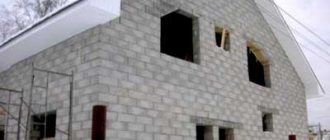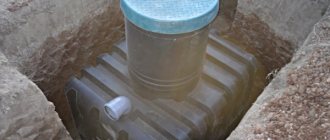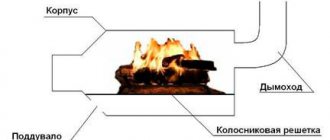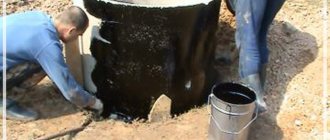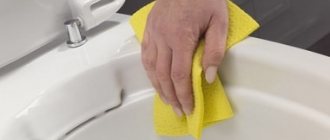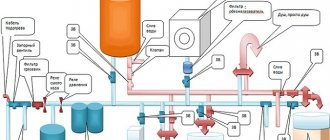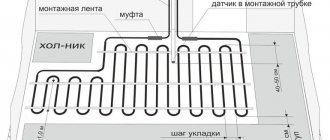With an independent sewerage system, life in the country or in your own home will not be frightening due to the lack of basic amenities. If you don’t have extra funds to purchase a ready-made sewer point, you can build a septic tank from Eurocubes with your own hands. It will not require special investments. Agree, this is a solid plus.
We are ready to share truly valuable information with site visitors. We describe step by step the process of organizing a sewer system with wastewater treatment in a homemade structure. All the subtleties of the technological process are outlined, guaranteeing trouble-free operation of the system and its long, impeccable service.
The information presented to your attention is based on the personal experience of independent builders of their own sewerage structures from European packaging. The requirements of regulatory documentation are taken into account. To make the information easier to understand, step-by-step photos and useful video tutorials are included.
Installation
The bottom of the dug pit is pre-concreted to prevent erosion of the soil under the influence of the enormous weight of the structure and the close occurrence of surface water.
After the structure is immersed in the pit using polystyrene foam, the walls of the septic tank and pipeline are insulated. A concrete solution is also poured between the walls of the containers and the soil. This procedure can be omitted if the soil is not subject to shedding or erosion. Now water is poured into the containers and the structure is covered with sand.
It is not difficult to build a post-treatment system, especially in places where there is sandy soil. A kind of well is constructed up to one meter deep. An outlet pipe is connected to it.
During operation, it is recommended to carry out periodic inspections, carefully examining the wide pipes that were installed in the septic tanks. Polyethylene and fatty substances can be found inside, which contaminate the containers, but do not undergo rapid decomposition. If such traces of contamination are detected, they are removed using available means.
It is also important to check the bottom of containers using a long pole. If a large amount of solid deposits has accumulated there, they must be removed:
- using the services of sewage disposal equipment;
- pumping out the contents using a fecal pump.
Sometimes manufacturers recommend purchasing special bacteria for septic tanks, which can significantly speed up the process of decomposition of organic waste. However, as practice shows, you can avoid additional costs by refusing to purchase such bacteria.
Nature itself took care of helping summer residents solve this problem. Microorganisms that feed on organic matter actively reproduce and, without additional “requests” from the owners of summer cottages, resolve the issue of recycling organic matter.
It will not be difficult to build a septic tank structure from Eurocubes according to a pre-prepared scheme if you carry out all the work correctly and choose high-quality materials. A self-made sewerage device can last up to 10 years without pumping.
How it works?
Septic tank from Eurocubes, diagram
The waste liquid enters the sewer pipes connected to the inlet pipe of the septic tank through the drain holes of the plumbing fixtures. Through this pipe, wastewater with various types of contaminants is poured into the bottom of the first Eurocube. Thanks to gravity, the wastewater settles in this container and is separated into heavy solids, fats, and gases. The initially clarified liquid is located in the center, between the layer of bottom silt deposits and the surface crust.
Through the overflow channel connecting both Eurocubes, the liquid flows into the second cube for post-treatment. In this case, fats and solids do not enter the pipe.
In the second Eurocube, the liquid is purified by biobacteria, which are periodically added from outside in the form of concentrates (bioseptic preparations). Microorganisms carry out additional purification of water, and after this process the liquid is poured into a drainage, storage tank, ditch, etc.
What are Eurocubes, their advantages and disadvantages
To transport various liquids for technical purposes, special plastic containers are used. Additionally, for safety reasons, it is placed in a metal frame. The volume of such containers reaches one cubic meter.
However, after the plastic container has fulfilled its original purpose, it is not recycled, but is reused. Most summer residents actively use such plastic containers for arranging septic tanks.
Plastic containers are ideal for implementing technical tasks of creating individual “sewage systems”. Among the obvious advantages are:
- light weight of the product, due to which the construction process and subsequent installation are carried out manually without the need for special equipment;
- affordable price;
- you can purchase both new products and those that have already been used (used Eurocubes have an even more attractive price);
- the plastic from which the Eurocubes are made has increased resistance to aggressive environments;
- the presence of a metal frame made of galvanized steel helps reduce soil pressure on the main structure;
- high level of tightness;
- long service life;
- ease of maintenance and use.
Along with the advantages, Eurocubes also have some disadvantages, which are important to consider when constructing an alternative sewage system. Due to its light weight, the plastic structure can be moved from the place where it was originally installed
This happens under the influence of groundwater that is close to the surface
Due to its light weight, the plastic structure can move from the place where it was originally installed. This happens under the influence of groundwater, which is close to the surface.
As a result of soil mobility, the metal structure may not withstand the resulting pressure, and as a result, the container is subject to deformation.
Such undesirable consequences can be prevented if, at the stage of constructing an individual sewer system, the base is filled with concrete in advance, and then the space between the walls of the dug pit and the container is filled with concrete mortar.
Construction of a septic tank
For a house or cottage, it is recommended to build a structure consisting of two septic tanks. If during the construction of a sewage system based on containers it is not possible to do without the use of special equipment, then it is impossible to refuse the help of friends.
Firstly, you will have to carry out excavation work in large volumes, digging pits of decent depth.
Secondly, loading septic tanks into dug pits, despite their low weight, is also quite problematic due to their large dimensions.
It is also important to consider that such a home-made cleaning device is capable of purifying wastewater not in full, but only by half. For this reason, it is important to worry about additionally equipping the structure with filters
Before you begin installing a septic tank, you need to calculate how much water is consumed daily by all residents. It’s good if meters are installed in the house. If they are not there, you will have to spend time and calculate the volume of water consumption.
The result obtained must be multiplied by three to find out what volume of the septic tank should be obtained
The first important requirement is that the volume of the septic tank must accommodate three days’ worth of waste.
Now you need to find a suitable place to install a septic tank from Eurocubes with your own hands according to the diagram
Since the containers will be connected by pipes, it is very important that they are positioned horizontally and level, without any bends. If you allow even a slight slope, the speed of the drains will slow down, and dirt and debris will concentrate in the internal space of the pipes, causing deterioration in the performance of the drains
It’s easier to understand the features of sewer construction from Eurocubes by watching a video that provides step-by-step instructions.
The construction process begins with excavation work:
- digging a trench (a trench is dug to lay pipes through which wastewater will flow into the first container);
- digging recesses for installing Eurocubes (the parameters of the recess should be set based on the length, width, height of the Eurocube, to which 15 cm are added - this additional space will subsequently be filled with concrete).
Pipe laying is carried out at a depth of no more than three meters from the ground surface
It is also important to dig a trench so that the pipes are located below the ground freezing level
The next step is the construction of a post-treatment system, which can have the following variations:
- on filtration fields;
- in the filter well;
- on filter embankments.
After such preparatory work, you can proceed to converting two containers into a septic tank. For this you will need:
- pipes;
- tees;
- other consumables.
All connections must be sealed to prevent wastewater leaks. Sewer pipes are connected at a distance of 20 cm below the top edge of the container.
A hole is cut inside the Eurocube into which 2 tees are mounted. The joints are also thoroughly sealed with waterproofing.
The inlet pipe and the up pipe are connected to the first tee. The main purpose of such a vertical pipe is to create conditions for comfortable inspection and cleaning of the system in the future.
The second tee is necessary in order to connect two containers to each other using a pipe. Also, another pipe of smaller diameter is attached to the second tee, which serves for ventilation.
The photo shows that the outlet and inlet openings of the first container should be at different levels. The input should be higher and the output lower.
If the project involves the use of not one, but several containers, then each of the subsequent ones is installed 20 cm lower than the previous one. The most common option for individual sewage systems are structures consisting of one or no more than three containers.
The pipe leading wastewater from the last tank to the post-treatment filter systems must be equipped with a check valve.
Tank Maintenance
The wastewater treatment station does not require frequent calls to the sewer truck, but once a year it is necessary to pump out sediment from the tanks, the level of which can be checked using a wooden stick.
It is also necessary to periodically add microorganism preparations. Especially if there is a smell around the septic tank.
Otherwise, this inexpensive design does not require any care.
Is it possible to install a sewer system in a private house yourself? A reliable drainage system around the house: everything that is important to know and take into account.
How to choose the right septic tank for a private home? https://klimatlab.com/kanalizaciya/septiki/dlya-chastnogo-doma-kak-vybrat.html Useful recommendations at the link.
The nuances of making a Eurocube
You can make a septic tank with your own hands from 2-3 eurocubes connected alternately.
Eurocubes should be located at different levels, i.e. each will be lower than the previous one, then the drains will flow from one Eurocube to another.
During the cleaning process, they will be broken down by anaerobic bacteria.
In order for a septic tank made from Eurocubes with your own hands to exist for a long time without pumping, it is necessary to fill in biologically active substances during the installation process, after interaction with which the purified liquid is absorbed into the soil.
The sludge can be removed once every few years, leaving a corresponding hole in the Eurocube for this purpose.
Advantages of a septic tank from a Eurocube
- Resistant to fairly large loads;
- High tightness;
- Ease of installation of pipes in Eurocubes;
- Resists the effects of chemicals;
- Affordable cost;
- Does not require special care;
- Light weight;
- With precision self-assembly, you get an excellent septic tank.
Disadvantages of using a Eurocube for septic tanks:
- The need for good fastening of the Eurocube in the ground, or concreting, since due to its low weight, groundwater can push it out of the ground to the surface;
- Possible deformation of the surface of the Eurocube, both during severe frosts and under too high loads.
DIY Eurocube installation
Self-installation of a septic tank from Eurocubes at the dacha includes several stages:
- It is necessary to calculate the volume of the tank. Since sufficient purification occurs in 3 days, the volume of the tank should include triple the daily volume of water consumption. For example, if 4 people live in a house and each use 150 liters per day, then 600 liters must be multiplied by 3 and we end up with 1800 liters. Thus, you need to buy 3 containers for a septic tank from 3 eurocubes with a volume of approximately 1.8 m3 each. You should take a septic tank with a volume slightly larger than designed if you often have guests.
- Excavation. First of all, you need to start preparing trenches for pipes for the septic tank and pits. Dig a hole 30 cm wider than the Eurocube itself. When calculating the depth, take into account the dimensions of the concrete base, insulation and the zero temperature point. It must be remembered that the pipes run with a slope of 3 cm per meter, and also lie below the zero temperature point. The bottom of the pit is filled with concrete and loops are installed to secure the Eurocube. Before pouring concrete, a sand cushion is usually placed at the bottom of the hole under the septic tank pipes.
- Assembly of the structure. The first 2 Eurocubes are connected to each other and to the sewer pipe; an overflow outlet is placed between the 2nd and 3rd Eurocubes. The latter is directly connected to the filter field.
In order to install a septic tank, you need to have Eurocubes, several pipes with a cross-section of 150 mm (their number varies and depends on the number of ventilation, transitions between containers), as well as 6 adapters.
First, you need to make slots for tees in the necks of the Eurocube. After 20 cm from the top down, make passages for the outlet pipe, which should connect to the tee inside the chamber.
Next, on the opposite side of the Eurocube, you need to cut a gap 40 cm from the top. Don't forget to make a slot for ventilation in the lid, and also install each camera strictly 20 cm lower.
When installing a septic tank yourself, it is necessary to properly seal the junction of the pipe and the Eurocube.
- Processing the pit. To protect the Eurocube from deformation, use a mixture of cement and sand 5:1, respectively. The top of the structure is covered with this mixture several times; each layer must be compressed.
In order to prevent deformation of the walls of the Eurocube from soil pressure during installation, fill it with water. You will also need penoizol to cover the upper surface of the septic tank.
How to extend the service life of a septic tank made from Eurocubes
The septic tank does not require special maintenance, but some points are worth considering to extend its useful life:
- Once every couple of years it is necessary to remove sediment from the container;
- Add dietary supplements periodically.
A septic tank made from Eurocubes, made with your own hands, is an economical and excellent option for use in any climate zone.
Features of laying a trench
A trench is laid under the sewer pipe that connects the house and the septic tank. The colder the climate of the area, the deeper the trench should be made. In the center of Russia, they usually make the depth 50–100 cm. To protect against freezing, it is better to insulate the laid pipe with mineral wool or polystyrene foam.
Septic tank for a dacha, which one is better: from budget to industrial
When laying a trench, it is necessary to take into account the slope required for the subsequent movement of wastewater by gravity. Usually the pipe is laid so that the slope is 2 - 3 cm per linear meter. This means that for 8 meters of sewer pipe, the difference between the first and last point of the pipe will be 16 - 24 cm.
This slope ensures full gravity flow; a lower level of slope can cause blockages, because the water will flow too slowly and large, solid elements will linger and accumulate. If you make the slope stronger, the result will also be disastrous. The water will flow too quickly, and solid particles will lag behind the flow of the water and, as a result, blockages will form. After all, fecal matter will not be able to move unhindered through pipes with accumulations. You can read in more detail at what depth to lay a sewer system in a private house.
When the trench is completely dug. Its bottom is covered with a thick layer of sand. This is done so that during operation the joints are not disturbed due to subsidence; this will be prevented by a sand cushion.
What is a Eurocube
Eurocube is a volumetric container made of non-food plastic, manufactured industrially. The Eurocube belongs to the category of medium-tonnage containers (volume 1000 liters). Structurally, the Eurocube consists of an outer packaging and a plastic “flask” IBC container.
Galvanized steel lathing is used as outer packaging. The packaging is located on a pallet made of plastic, less often metal. The material from which the Eurocube is made is low-density polyethylene. At the top of the “flask” there is a filler neck with a polyethylene cap. The diameter of the filler neck hole is 150 mm. At the bottom there is a drain valve equipped with a plunger or ball type valve.
The drain valve is located in such a way that it practically does not extend beyond the overall dimensions of the Eurocube. With its entire appearance, the durable and capacious design of the Eurocube makes it clear that this is a reusable specimen. Which, in fact, is what the compatriots took advantage of when they equipped the Eurocube for a septic tank.
In their “European homeland,” cubes are used for transporting and storing liquid or bulk cargo in the chemical, oil, food and pharmaceutical industries. So why not give a second life to a handy, used container. Moreover, the design of a septic tank made from Eurocubes is simple and accessible!
General information
Eurocubes are plastic (polyethylene) containers with a wooden or metal tray designed for storing or moving liquids. The Eurocube itself is placed in a special metal case, protecting it from damage. Weight is about 67 kilograms.
The maximum holding volume of liquids is 1000 liters. A septic tank is a design for cleaning; it consists of two Eurocubes, identical in size. Pipes for air removal (ventilation), pipes at the inlet for liquid to enter the septic tank and at the outlet are placed in them.
A check valve is installed on the pipe exiting the pipe so that the liquid, after cleaning, cannot penetrate back into the septic tank. For more efficient operation, both septic tanks are rigidly fastened, slightly shifting them vertically.

